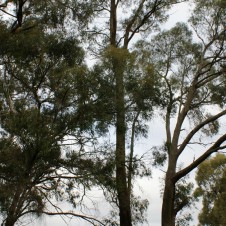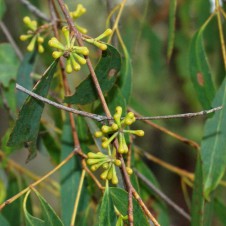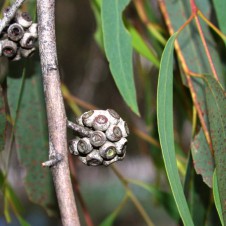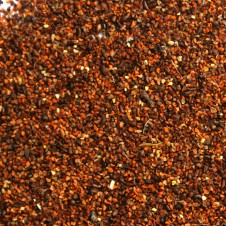General Description: Medium tree to 15 m (or occasionally 30 m in mountain areas), with dense, spreading, pendulous crown. Bark grey-brown, fine textured, fibrous, persistent to all but smallest branches.
Flowers and Fruit: Prolific white-cream flowers from October to January. Fruit is small and pear-shaped with narrow flat rims and small valves. Fruit can be in dense clusters of 8 to 16 fruits.
Site Preference and Tolerances: Variable and includes deep loamy soils of high-rainfall, hilly country, clay-loam soils of lowland hills and flats, alluvial soils, near rivers. Will not tolerate poor drainage.
Life Span: Long-lived (80+ years)
Wildlife Value: An important habitat tree, providing nectar and seed for insects and birds, nesting hollows and occasionally food for koalas. Treecreepers are attracted to insects in the bark.
Other Values and Uses: An attractive tree with drooping foliage for large gardens and parks. A useful fuel which burns quickly. Timber is light brown and moderately coarse textured and straight grained and is used for general construction. Has a tendency to shrink upon seasoning and this limits its use. Medium to high level shelter in mixed shelterbelts with good shade characteristics.
Other Scientific Names: Eucalyptus australiana, Eucalyptus radiata s.l., Eucalyptus robertsonii
Other Common Names: Black Peppermint, Common Peppermint, Narrow-leaved Peppermint
Germination Information: Can be propagated easily from seed and will direct seed well if weeds are controlled. Usually germinates in 2-5 weeks.




